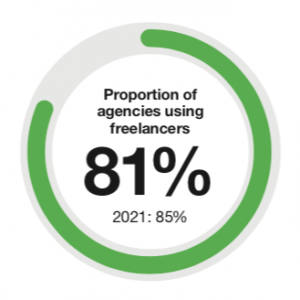Health check: We’re likely to break even this year
By Sim Thirunesan, Finance and Business Director, Management for Design
Anticipating a finely balanced profit position? This scenario-specific advice looks at some key areas of the business to monitor and manage.
 Your leadership team need to have a clear understanding of the likelihood of break even and the risk factors, as the margin of error is slim. Do you understand the duration of time you have available to potentially turn things around or avoid a loss? Having a clear understanding of this will impact your decisions.
Your leadership team need to have a clear understanding of the likelihood of break even and the risk factors, as the margin of error is slim. Do you understand the duration of time you have available to potentially turn things around or avoid a loss? Having a clear understanding of this will impact your decisions.
Be aware of what aspects of your budget can be frozen i.e. recruitment, investment in tech upgrades etc vs what is business critical for you. Where is there flexibility? For instance, freelance resource vs permanent hires?
Actively monitor discounts/ investments and make deliberate business decisions to achieve the budgeted profit margin.
Ensure your charge out rates are competitive and cover your overheads. If your studio is busy, yet you are in a position of only breaking even, it is worth reviewing not only your charge out rates but your pricing models and strategy.
Talent retention is a challenge for businesses in all stages. Having a comprehensive talent retention programme in place is an imperative. This will not only help keep operating costs down, but more importantly, ensure you have a satisfied workforce who are empowered, engaged and happy to be there.
Before you engage with freelancers, you need to make sure you understand your organisation’s utilisation rates. Are you actively managing inefficiencies and is there a process in place which is understood by everyone? It is important the impact of freelance resource on the bottom line is understood. Make sure robust processes are in place to justify a requirement of freelance resource.
Teams should be accountable for delivering profitable projects and if not, these should be adequately interrogated through the various project stages. There should be no nasty surprises at the end and overspends should be known and clearly identified and managed. Teams should feel empowered enough to turn down briefs with inadequate budget unless there is a business case to support an investment.
If achieving budgeted revenue is proving to be a challenge, particularly in tough economic conditions, costs need to be managed effectively. The biggest implication will be on cashflow. Does your leadership team have clear oversight of your cashflow forecast? Are you doing all that you can to protect your existing cash position? Do you have a safety net i.e. an overdraft facility or other tool available to support the business short term? Do you have trusted commercial business partners in finance to guide you and offer tactical solutions? One possibility, if you have clients with long payment terms, could include exploring factoring companies to ease cashflow.
 Your leadership team need to have a clear understanding of the likelihood of break even and the risk factors, as the margin of error is slim. Do you understand the duration of time you have available to potentially turn things around or avoid a loss? Having a clear understanding of this will impact your decisions.
Your leadership team need to have a clear understanding of the likelihood of break even and the risk factors, as the margin of error is slim. Do you understand the duration of time you have available to potentially turn things around or avoid a loss? Having a clear understanding of this will impact your decisions. 